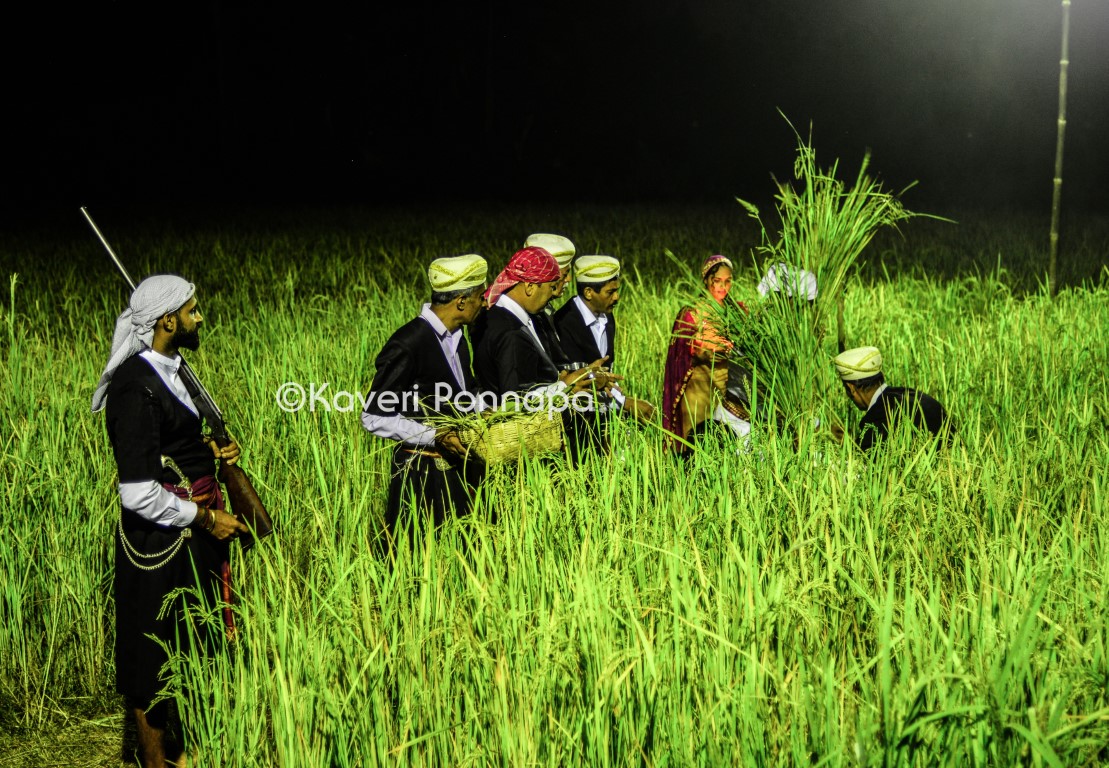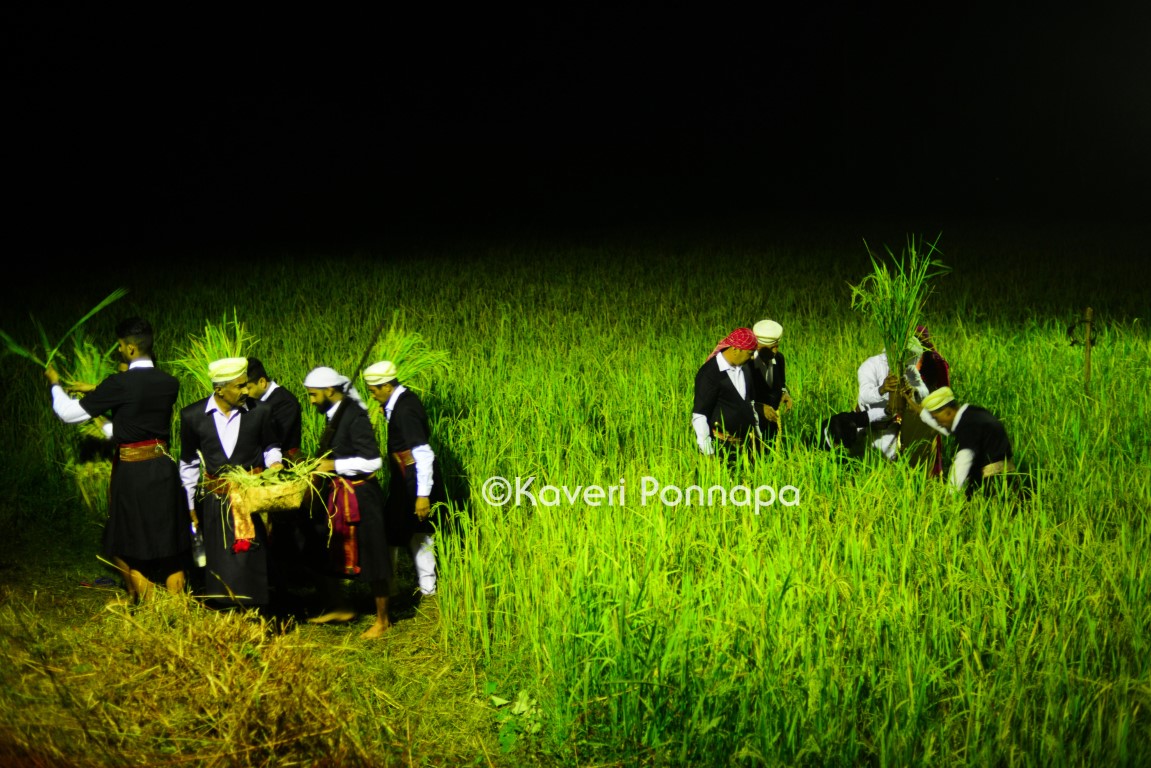
One of the taliyatakkibolchas from the kitchen is carried by a young woman of the okka, who leads the way to the rice fields, followed by the dudipatkaras who sing batte pat (song of the path) weaving into song all the changes that have taken place over the past year in their surroundings. Other members of the okka follow the singers to the fields.




Ranged along the margins of the rice fields, balo paat is sung, praising the land, the nad (village) the golden grain and invoking the blessings of the ancestors. At the precise time of harvest, already determined at Padi Shri Igguthappa temple, milk is poured at the base of the first stalks to be harvested. The gathered men chant ‘O’ ‘O’ ‘O’ facing the direction of the shrine of Iguthappa, a second time for the goddess Bhagavati, and finally, facing East, they chant again, as a single gunshot is fired in the air, and the sheaves harvested. The harvested sheaves are filled first into the puthari kuthi, then the puthari basket, and the entire procession turns around, making its way back, pausing at the kaimada (small shrine to ancestors) to the Bhagavati temple where there is also a shrine dedicated to Botekara Aiyappa, the God of the Hunt. Neighbouring okkas converge from their respective fields to the temple to make offerings and dance together, before returning to their ain manes, where the rituals and celebrations continue.


The living puthari traditions described above were documented on 7 th December, 2022 at the Kundyolanda ain mane.

